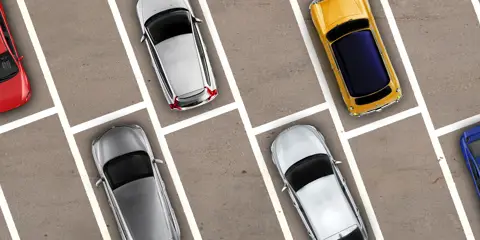Friday, 04 June 2021
Advisory Group Proposes ‘Blue Sky’ Changes to District Representation
Recommendations include shift to three new wards across the district

An independent advisory group has recommended a new model of resident representation that will be considered by Council and the community in the coming months.
Under the Local Electoral Act 2001, local authorities are required to review their representation agreements at least once every six years. Queenstown Lakes District Council (QLDC) undertook a review resulting in minor boundary amendments to the Arrowtown Ward in 2018, but resolved at that time to undertake a further review within three years with a more ‘blue sky’ approach.
QLDC Electoral Officer Jane Robertson said that in reviewing representation arrangements, local authorities must provide for “effective representation of communities of interest[1]” and “fair representation for electors[2]”.
“The Act is very clear in its statutory requirements for fair representation based on ward boundaries and the normally resident population within current or proposed wards. This is often called the plus or minus ten percent rule. Based on Statistics NZ census data, which was reviewed and updated in March 2020, both the Arrowtown and Wānaka Wards are now non-compliant with that requirement.”
The Advisory Group was convened at the beginning of 2021 and included an independent Chair, former QLDC Mayor, Political Science Academic, Iwi representative and three community members selected from an expression of interest process. The Group met on four occasions and has now provided its recommendation as follows:
- The district elects a total of 12 councillors across three new wards (four councillors per ward)
- The three new wards (with final boundaries to be confirmed) of similar population sizes as follows:
- Whakatipu Ward – comprising of an area west of the Shotover River and the eastern shoreline of the lower part of Lake Wakatipu; to include Frankton, Queenstown, Kingston and Glenorchy
- Kawarau Ward – comprising an area east of the Shotover River and Lake Wakatipu; to include Arrowtown, Arthurs Point (both sides of the Shotover), Gibbston Valley, Lake Hayes, Shotover Country, Jacks Point, Ladies Mile
- Wānaka- Hāwea Ward – mirroring the currently Wānaka Ward.
- The district should have no community boards, which includes disbanding the existing Wānaka Community Board.
The Advisory Group recommendation to disband the existing Wānaka Community Board reflects a current inequity that exists as no other area or community within the district has a community board. This Group believed that the proposed Wānaka-Hāwea Ward could be more effectively represented by having a total of four councillors elected to Council and would reduce potentially unnecessary bureaucracy by having an additional decision or recommendation-making body.
QLDC Chief Executive Mike Theelen acknowledged that the Advisory Board’s recommended changes were a fresh way of looking at representation in the district and required people to think differently.
“In particular there is the proposal to expand the Arrowtown Ward from its immediate village location to encompass a much wider community across the Wakatipu basin and towards the Kawarau, and enables Arrowtown to have much more say in representation.”
“The Group’s findings concluded that the loss of the community board in Wānaka would be offset by the increase in the number of the Upper Clutha-based Councillors around the Council table and improve community representation.
“The package of changes recommended by the Advisory Group reflects an open and comprehensive consideration of how we can best improve community representation at a Council level. We recognise this presents some change but want to share this proposal ahead of the Council meeting to give people plenty of time to think about how they are represented at a district level and how that can make sure all voices are heard on important issues,” said Mr Theelen.
“The recommendation of the Advisory Group will be presented to the Council on 30 June and out for formal community consultation from 5 July until 6 August. Following formal hearings, officers expect to take a final proposal to Council in mid-September. The final outcome will take effect for the October 2022 local elections. I strongly recommend everyone take this time to make sure they are informed about what a representation review is, and consider what this proposal may mean for them. We want people to have this discussion and following Council’s consideration of the recommendations to tell the Council through the formal consultation process how you feel this does or doesn’t fairly represent their local community and the district as a whole.”
Final proposed boundaries are yet to be confirmed subject to further analysis of population data and will be available when the Council report is published on Friday 25 June.
ENDS|KUA MUTU.
Media: all enquiries should be directed to Council, not the Advisory Group. For comment or further information, please contact: communications@qldc.govt.nz or call 03 441 1802.
FURTHER INFORMATION | Kā pāroko tāpiri:
A representation review addresses the total number of councillors there should be for the district or region and the way they are elected. In the case of territorial authorities, this involves deciding whether councillors are elected from wards or ‘at large’ across the whole district, or by a mix of both wards and ‘at large’. A review also covers the boundaries of wards and constituencies, and their names. In the case of territorial authorities, a review also needs to address whether there should be community boards in the district and, if so, the number of boards; their names and boundaries; the number of members for each board including any appointed members; and whether the board area should be subdivided for electoral purposes.
The process and timelines for conducting a Representation Review are defined by the Local Government Commission Mana Kāwanatanga ā Rohe: http://www.lgc.govt.nz/representation-reviews/
The Council decision to convene an Advisory Group was resolved at its meeting on 3 September. The report proposing that decision can be found here: https://www.qldc.govt.nz/media/k4xpvjmn/4-fpp-stv-rep-review.pdf
The Representation Review Advisory Group members are as follows:
- Bruce Robertson (Independent Chair)
- Clive Geddes (former QLDC Mayor)
- Janine Hayward (University of Otago)
- Dean Whaanga (Te Ao Marama)
- John Glover (Queenstown-Wakatipu Ward resident)
- Viv Milsom (Wānaka Ward resident)
- Ian Hall (Wānaka Ward resident)
The Advisory Group was supported by QLDC staff:
- Jane Robertson (Electoral Officer and Senior Governance Advisor)
- Brendan Peet (General Counsel)
- Naell Crosby-Roe (Governance & Stakeholder Services Manager)
Current statistics demonstrating that the Arrowtown and Wānaka Wards are currently non-compliant with the statutory fair representation requirement:
Subject to approval for consultation on 30 June, details of the proposal including proposed boundary lines will be available from https://letstalk.qldc.govt.nz/ and local Council offices and libraries.
[1] Local Electoral Act 2001 S19T and S19U
[2] Local Electoral Act S19V





